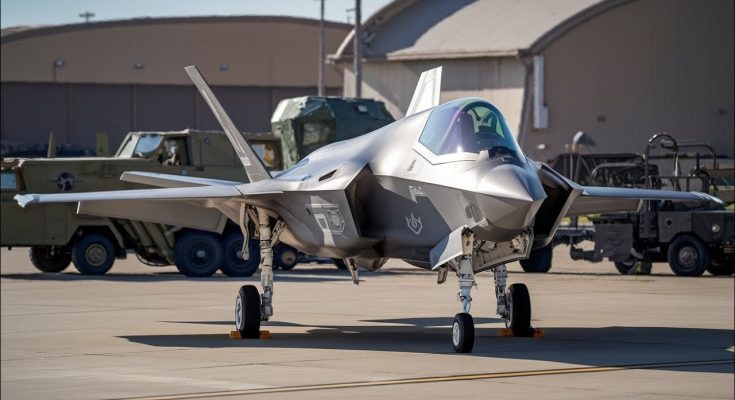The F-35 Lightning II is one of the most advanced and versatile stealth multirole combat jets ever developed. Produced by Lockheed Martin, the F-35 was designed to serve a variety of roles, from air superiority to ground attack, all while maintaining cutting-edge stealth capabilities. With its advanced technology, versatility, and interoperability, the F-35 has become a cornerstone of modern air forces around the world, including those of the United States, NATO allies, and many other international partners.
The F-35 is a fifth-generation fighter, which means it incorporates the latest advancements in stealth, avionics, and weapons systems. Stealth technology is one of the aircraft’s defining features. The F-35’s design minimizes its radar cross-section, making it nearly invisible to enemy radar systems. Its smooth, angular shape, along with radar-absorbing materials, helps it evade detection in hostile airspace. This low observability is crucial in modern combat, where being detected can mean the difference between success and failure.
The F-35’s advanced sensors provide it with exceptional situational awareness, a key factor for modern combat. It is equipped with the AN/APG-81 radar, a highly advanced radar system that can detect and track enemy aircraft and ground targets from long distances. The F-35 also features Distributed Aperture System (DAS), which uses infrared sensors to provide 360-degree visibility around the aircraft. This system can detect and track incoming missiles or enemy fighters, alerting the pilot to potential threats. Furthermore, the electronic warfare (EW) systems integrated into the F-35 allow it to jam enemy radar and disrupt communications, providing a significant advantage in contested environments.
One of the F-35’s greatest strengths is its multirole capability. Unlike previous fighter jets that were designed for specific missions, the F-35 can perform a wide range of tasks, including air superiority, ground attack, close air support, and intelligence, surveillance, and reconnaissance (ISR). This makes the F-35 an incredibly versatile asset for modern military forces. Whether conducting air-to-air combat, striking ground targets with precision-guided munitions, or providing close air support for ground troops, the F-35 is capable of excelling in a variety of mission types.
The F-35 comes in three variants, each designed for different operational needs:
- F-35A: The conventional takeoff and landing (CTOL) variant, intended for use by the U.S. Air Force and allied air forces. It is the most common version and is equipped with a range of air-to-air and air-to-ground weaponry.
- F-35B: The short takeoff and vertical landing (STOVL) variant, designed for the U.S. Marine Corps and allied navies. It can take off and land in confined spaces, such as aircraft carriers or forward-operating bases, making it highly versatile for maritime operations.
- F-35C: The carrier-based version, designed for use by the U.S. Navy. It features larger wings and more robust landing gear to withstand the demands of carrier operations.
The F-35’s interoperability with other military systems is another key advantage. It can seamlessly integrate into joint and allied operations, exchanging data with other aircraft, ships, and ground units in real time. This capability enhances the effectiveness of the entire force, creating a more cohesive and flexible combat environment.
However, the F-35 program has faced challenges, including cost overruns and delays in production. Despite these hurdles, the F-35 remains one of the most advanced and capable fighter jets in the world. Its combination of stealth, sensors, and multirole versatility has made it an essential asset for air forces and navies worldwide.
In conclusion, the F-35 Lightning II is a game-changing multirole stealth fighter that brings a new level of capability and flexibility to modern air combat. Its ability to perform a wide range of missions, combined with its stealth, advanced sensors, and interoperability, makes it a dominant force in the skies. With its continued integration into air forces around the world, the F-35 will remain at the forefront of military aviation for decades to come.



